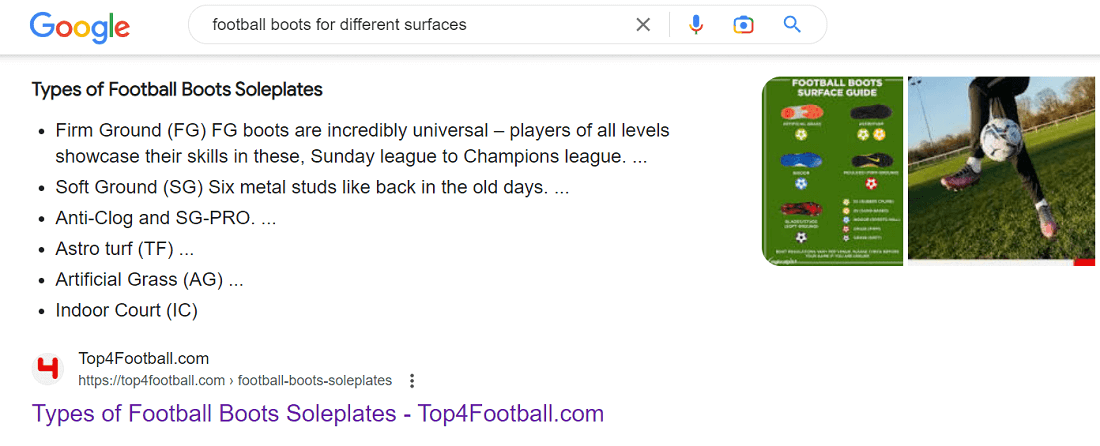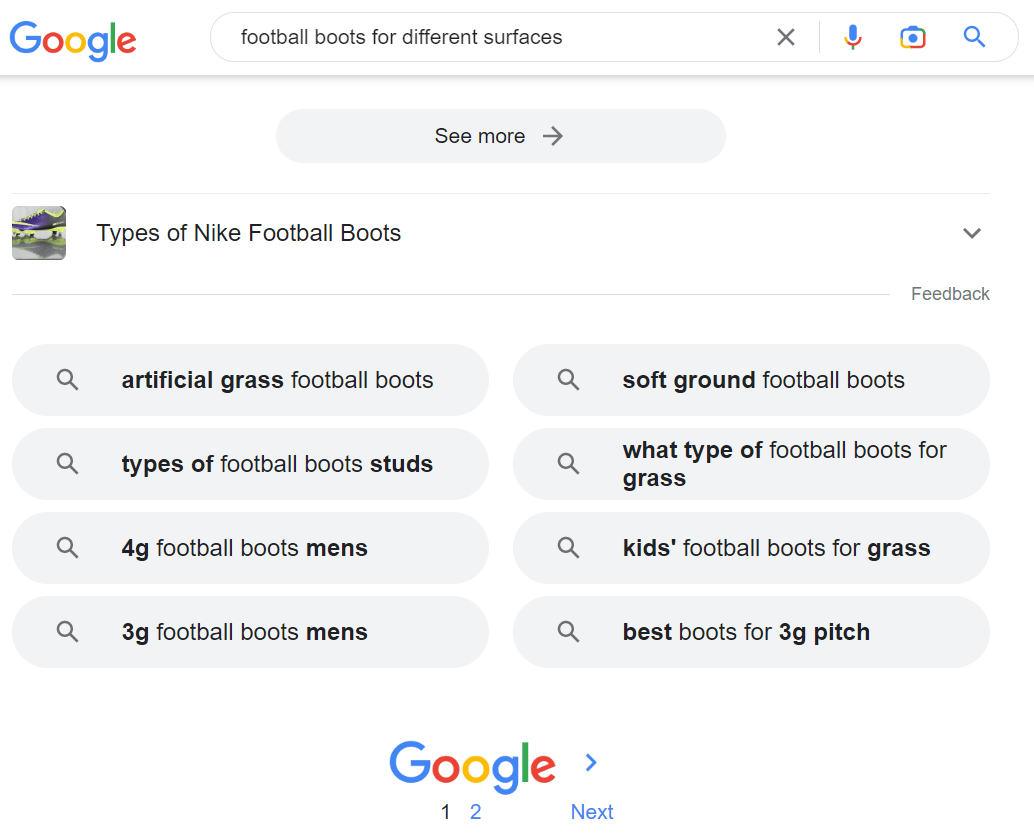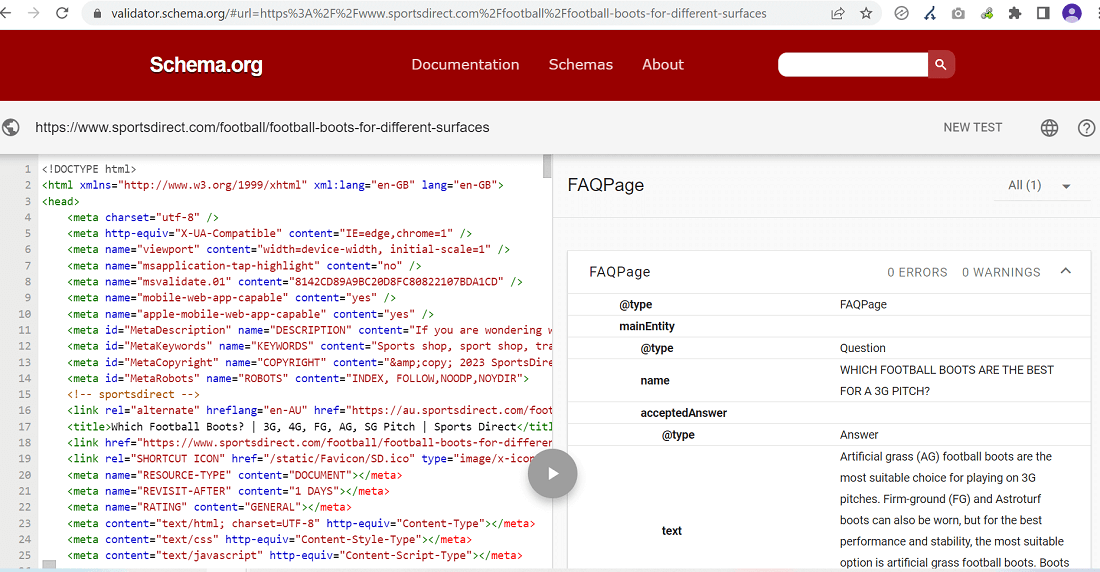This post offers a comprehensive overview of the suggested content and technical structure that can boost the SEO performance of landing pages created on eCommerce sites typically created for the purpose of brand categories, new product launches, seasonal campaigns etc.
The recommendations to SEO Optimise your landing pages apply to all mentioned e-commerce landing page types and should be incorporated with the content already displayed on these pages.
SEO for Landing Pages: Best Practices to Rank
1. Meta data
Make sure to include relevant search terms in the Title tag, H1, and Meta description. These should be based on SEO keyword research. Furthermore, Meta descriptions should include a call to action to motivate customers to visit the site, e.g., Learn more!

2. Top 10 / Best Lists
Google prefers structured content, especially lists, which are often displayed in the Featured Snippets at the top of search results (see example below).
If possible, integrate product lists on landing pages to improve the customer experience. These could feature:
- Top 10 products related to the target theme – displayed as a numbered list
- Popular products connected to the target theme – displayed as a bulleted list
- Best-selling products from the featured brand – displayed as a bulleted list

Technical Optimisation
For lists to appear in Featured Snippets, they must be formatted using the correct HTML code (see below). Lists should also be preceded by a relevant title, formatted as an appropriate Header Tag, e.g., H2, H3, etc.
Bulleted list example
<h2>Best overall long underwear</h2>
<ul>
<li>Smartwool Women's Classic All-Season Merino Base Layer Long Sleeve</li>
<li>Smartwool Women's Classic All-Season Merino Base Layer Bottom</li>
<li>Icebreaker Women's Merino 200 Oasis Long Sleeve Half Zip Thermal Top</li>
<li>Icebreaker Women's Merino 200 Oasis Thermal Leggings</li>
<li>Terramar Women's Thermasilk Scoop-Neck Top</li>
</ul>
Numbered list example
<h2>Best overall long underwear</h2>
<ol>
<li>Smartwool Women's Classic All-Season Merino Base Layer Long Sleeve</li>
<li>Smartwool Women's Classic All-Season Merino Base Layer Bottom</li>
<li>Icebreaker Women's Merino 200 Oasis Long Sleeve Half Zip Thermal Top</li>
<li>Icebreaker Women's Merino 200 Oasis Thermal Leggings</li>
<li>Terramar Women's Thermasilk Scoop-Neck Top</li>
</ol>
3. Related Questions
It’s important to consider what other questions customers might search for around your target topic or product.
Incorporating this type of content offers two key advantages: the page will rank for a broader range of queries that potential customers might be interested in, and the content can be technically structured in a way that makes it eligible for People also ask (PAA) and FAQ Link result features (see examples below).
The questions appearing in PAAs can be used to identify relevant queries by searching for a topic or product (see examples below). These questions can then be addressed on the landing page to target the broadest audience possible.
When generating questions, also consider the audience you will be targeting. For example, would there be different questions to answer for a child versus adult variations of a product?
The addition of short FAQ blocks targeting approximately 4 questions for each topic would help to significantly increase the relevancy of the landing page.
Including short FAQ sections with about 4 questions for each topic can significantly enhance the relevance of the landing page.
People also ask

FAQ Links

Related Keywords

Technical Optimisation
FAQPage Schema is required to generate the FAQ Links features and helps pages to rank in PAAs as well as Featured Snippets. Below is an example of the FAQPage Schema JSON code deployed to the Evans Cycles Electric Bike Buying Guide:
To generate the FAQ Links features and help pages rank in PAAs as well as Featured Snippets, employ the FAQPage Schema. Here’s an example of the FAQPage Schema JSON code used in the Boots for Different Surfaces landing page.

4. Cross-Sell Opportunities
For landing pages that focus on a specific product, there is potential to target search terms related to that product. For example, on a landing page for Air Jordan, you could have a section about boot personalisation targeting keywords like ‘personalised Air Jordan’.
The primary cross-promotion opportunity lies in personalisation options. However, it’s also important to include any products or services frequently purchased together on the landing page.
5. Supplementary Content
Videos often appear on the first page of search results (see example below), so it’s crucial to include relevant video content for a product launch or subject on the landing page.
Additionally, since videos can rank independently on YouTube, it’s essential to optimise YouTube video titles.

6. Seasonal pages to time Seasonal Peaks
For seasonal pages, some additional factors should be considered to maximize performance. There will be a delay between publishing a new page and its subsequent ranking, so it’s essential to consider the seasonal peaks of relevant search terms. For instance, if you want to target search terms related to winter football gear, the seasonal peaks for associated products are in November, so you should publish pages 4 to 6 weeks before the peak.

It is also important to consider that the seasonal search volume may be significantly higher than the average monthly searches for a specific keyword. For example, the average monthly search volume for soft ground football boots products averaged over the course of 12 months is 8,100. Still, the peak search volume in November is 27,100 which is triple the average monthly value.
Therefore when deciding which seasonal products or topics to target with a landing page, use the peak search volume rather than the average monthly searches.
7. Related Products
For seasonal landing pages, it’s essential to consider complimentary products that may be relevant to the main theme. For example, let’s look at the baselayer term mentioned in the table above. We can see that soft-ground football boots also present an opportunity alongside clothing-related searches as it peaks in November.
Thus, it’s important to consider a wide range of potentially popular products on seasonal landing pages, as there may be opportunities to target a more comprehensive range of products.
